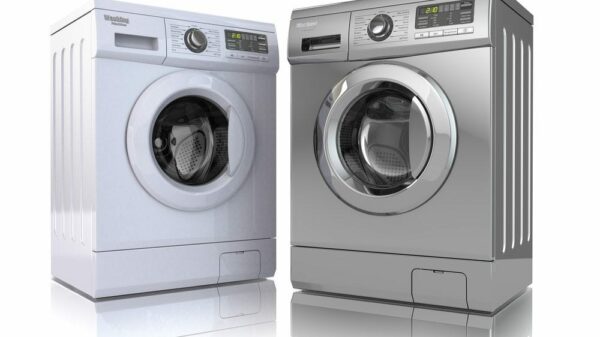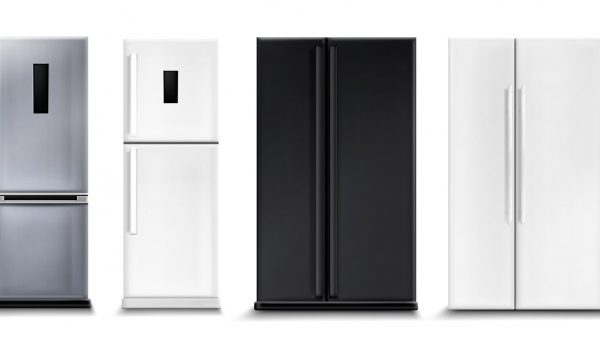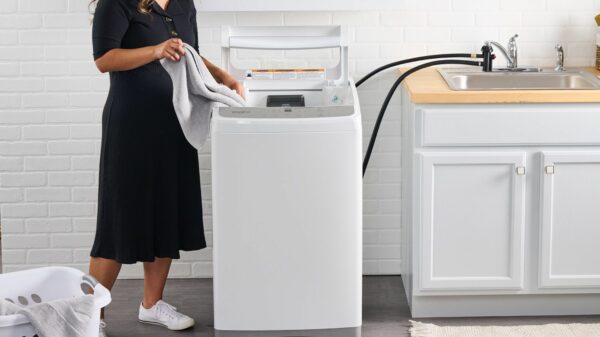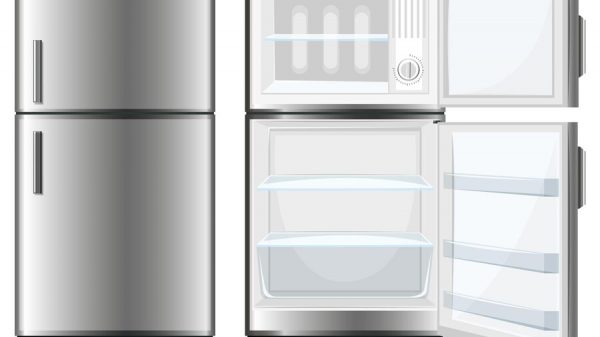The Ultimate Refrigerator Buying Guide: How to Choose the Perfect Cooling Solution
Are you in the market for a new refrigerator? With so many options available, finding the perfect cooling solution can be a daunting task. But fear not! In this ultimate refrigerator buying guide, we’ll walk you through everything you need to know to make an informed decision. From understanding the different types of refrigerators to key features and considerations, we’ve got you covered.
1. Assess Your Needs
Before diving into the sea of refrigerator options, take a moment to assess your needs. Consider the size of your family, the available kitchen space, and your cooking habits. If you often host gatherings or cook large meals, a spacious refrigerator with ample storage might be ideal. On the other hand, if you live alone or have a small family, a compact refrigerator might suffice.
2. Types of Refrigerators
Refrigerators come in various types, each offering unique benefits. The most common types include:
a. Top Freezer Refrigerators
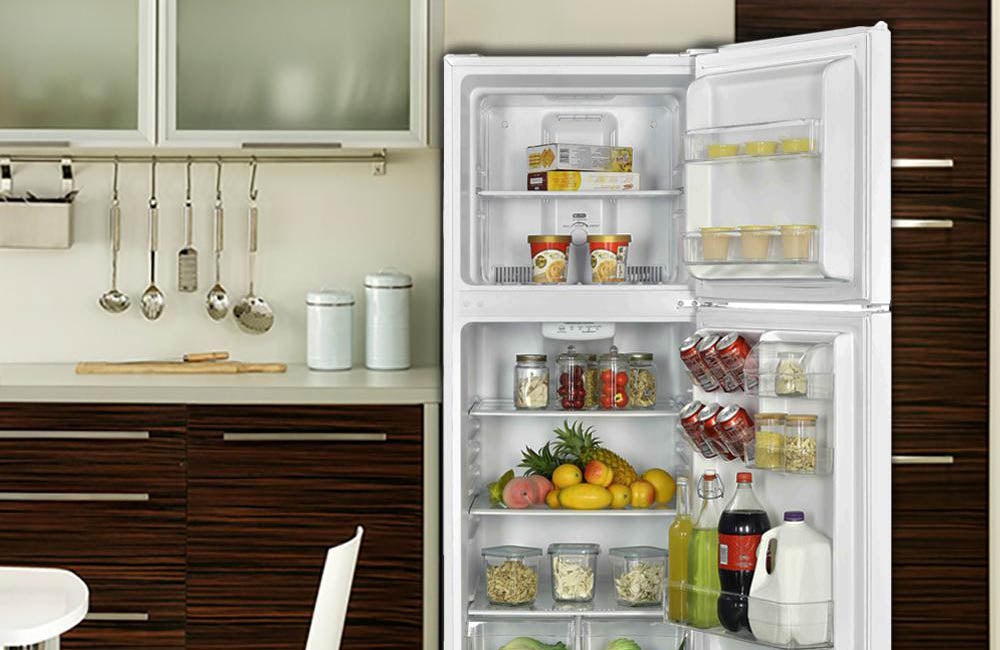
Top freezer refrigerators are the classic style, with the freezer compartment located at the top and the refrigerator at the bottom. They are budget-friendly and space-efficient, making them suitable for smaller kitchens.
b. Bottom Freezer Refrigerators
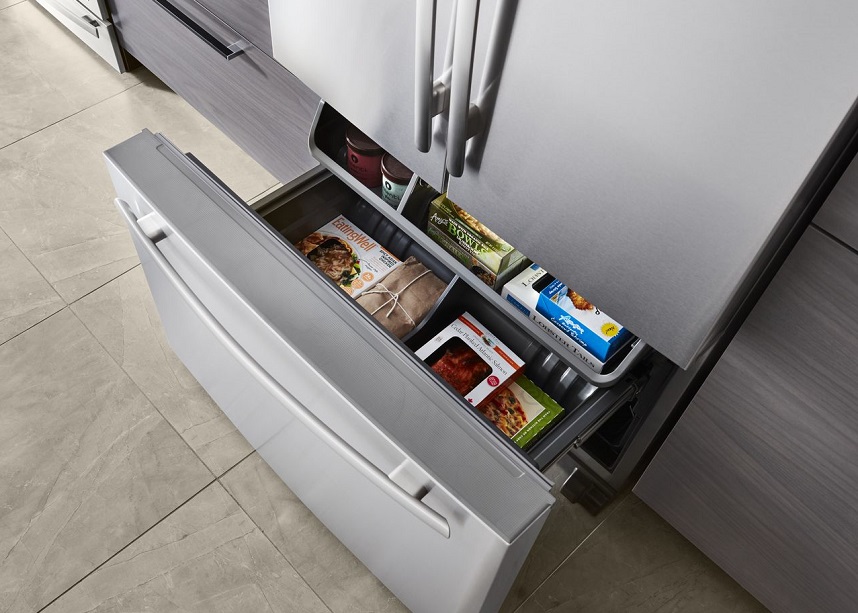
Bottom freezer refrigerators have the freezer compartment at the bottom and the refrigerator on top. This design allows easy access to fresh food and is more ergonomic. They are ideal for those who frequently access the refrigerator section.
c. Side-by-Side Refrigerators
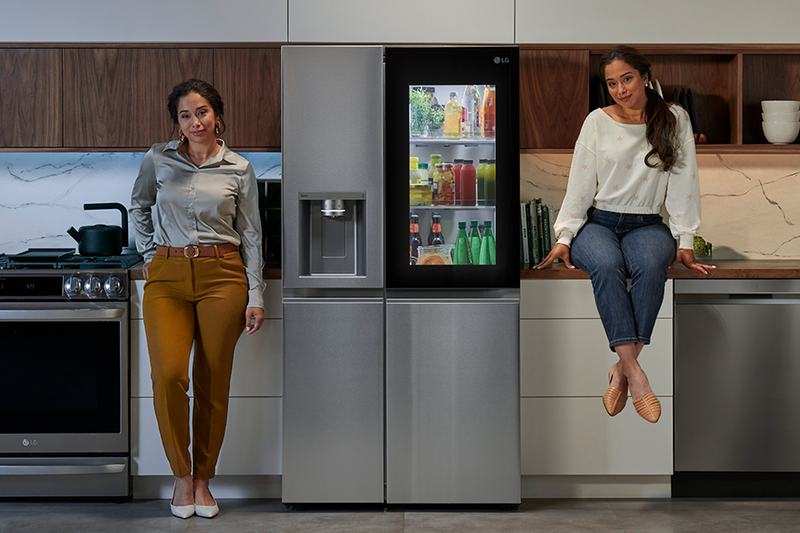
Side-by-side refrigerators have vertical compartments with the freezer on one side and the refrigerator on the other. They offer ample storage space and easy access to both fresh and frozen items.
d. French Door Refrigerators
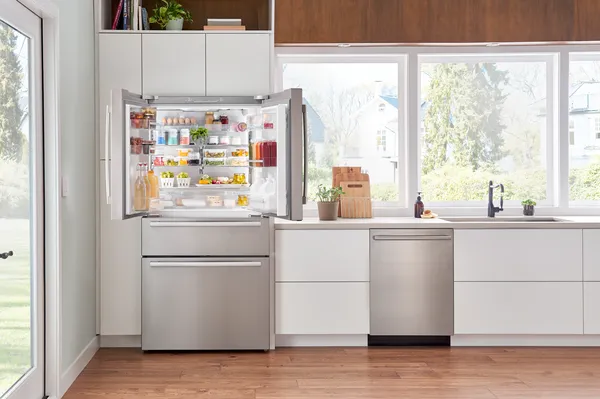
French door refrigerators have two doors that open outwards, with the freezer at the bottom. They provide a sophisticated look and are perfect for larger families or those who entertain frequently.
e. Compact Refrigerators
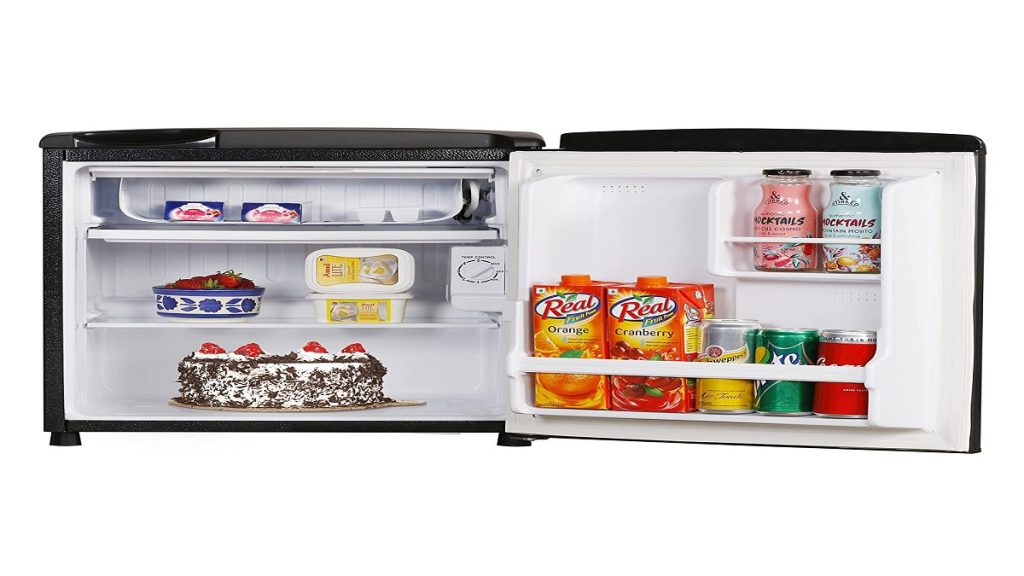 Compact refrigerators are small, space-saving units, perfect for dorm rooms, offices, or as a secondary fridge. They offer basic cooling functionalities and are energy-efficient.
Compact refrigerators are small, space-saving units, perfect for dorm rooms, offices, or as a secondary fridge. They offer basic cooling functionalities and are energy-efficient.
3.Capacity and Size
Choosing the right size and capacity is crucial for your refrigerator’s efficiency and convenience. Consider the dimensions of the available space in your kitchen and ensure the refrigerator fits comfortably without obstructing other areas.
4. Energy Efficiency Matters
Refrigerators can be energy-intensive appliances. Opt for an energy-efficient model to save on utility bills and reduce your environmental impact. Look for the Energy Star label, which indicates that the refrigerator meets strict energy efficiency guidelines.
5. Cooling Technology
The cooling technology used in refrigerators can significantly impact their performance and freshness of your food. Some popular cooling technologies include:
a. Compressor Cooling
Compressor cooling is the most common technology found in traditional refrigerators. It uses a compressor to circulate refrigerant and maintain cool temperatures.
b. Thermoelectric Cooling
Thermoelectric cooling is commonly used in compact refrigerators. It operates silently and has fewer moving parts, making it a low-maintenance option.
c. Inverter Technology
Inverter technology is known for its energy efficiency and precise temperature control. It adjusts the compressor speed according to cooling requirements, resulting in lower energy consumption.
6. Essential Features
When choosing a refrigerator, consider the following essential features:
a. Shelves and Compartments
Adjustable and spill-proof shelves make organizing your refrigerator a breeze. Look for compartments that suit your storage needs, such as crisper drawers for fruits and vegetables.
b. Door Configuration
Consider the number and arrangement of doors. Some refrigerators have reversible doors, allowing you to change the direction of opening based on your kitchen layout.
c. Ice and Water Dispensers
Built-in ice and water dispensers offer convenience, but they also require additional plumbing and maintenance. Decide whether this feature aligns with your lifestyle.
d. Temperature Control
Precise temperature control is essential for keeping food fresh for longer periods. Some refrigerators come with digital temperature displays and customizable settings.
Energy-Saving Modes
Look for models with energy-saving modes or vacation settings to further reduce energy consumption when not in regular use.
7. Brand Reputation and Warranty
Investing in a reputable brand ensures product quality and reliable customer support. Check reviews and ratings from other buyers to gain insights into the brand’s reputation. Additionally, opt for a refrigerator with a warranty to protect yourself against potential defects.
8. Budget Considerations
Refrigerators come in a wide price range. Set a budget that aligns with your needs and explore options within that range. Remember that investing in a quality refrigerator is a long-term investment in your kitchen.
9. Aesthetics and Design
Your refrigerator is a prominent feature in your kitchen, so its design and aesthetics matter. Choose a style that complements your kitchen decor and enhances the overall ambiance.
10. Installation and Maintenance
Ensure you have adequate space and clearances for the refrigerator’s installation. Regular maintenance, such as cleaning coils and checking seals, will prolong the appliance’s lifespan and optimize performance.
Choosing the perfect refrigerator involves careful consideration of your needs, available space, energy efficiency, cooling technology, essential features, brand reputation, and budget. By following this ultimate refrigerator buying guide, you’ll be well-equipped to make the right choice for your cooling needs. Remember, Pickaboo is a reliable solution provider for all your refrigerator needs. Reach out to them today to find the perfect cooling solution for your kitchen.
**FAQs**
Q1: How often should I defrost my refrigerator?
A :It depends on the model, but most refrigerators with a freezer compartment need defrosting every few months or when the frost buildup reaches about 0.25 inches.
Q2: Can I install a refrigerator next to a heat source?
A:It’s best to keep your refrigerator away from direct sunlight, stoves, ovens, and other heat sources to maintain optimal cooling performance.
Q3: What is the average lifespan of a refrigerator?
A: The average lifespan of a refrigerator is around 10-15 years. Proper maintenance and regular cleaning can extend its longevity.
Q4: How do I clean the refrigerator coils?
A: Unplug the refrigerator and use a coil brush or vacuum cleaner with a brush attachment to gently remove dust and debris from the coils.
Q5: Can I install my refrigerator in a garage?
A: Yes, you can install a refrigerator in the garage, but extreme temperatures may affect its performance. Consider a garage kit to maintain consistent temperatures.
Q6: What is a counter-depth refrigerator?
A: A counter-depth refrigerator is designed to align with standard kitchen counters, providing a built-in and seamless look.
Q7: Do I need a water filter for my refrigerator’s water dispenser?
A: While not mandatory, a water filter is recommended to improve the taste and quality of the water dispensed by your refrigerator.
Q8: Can I move my refrigerator on its side?
A: It’s best to avoid tilting or laying your refrigerator on its side during transportation. If necessary, follow the manufacturer’s guidelines for safe handling
Q9: How do I prevent odors in my refrigerator?
A: Regularly clean the interior, discard expired items, and use baking soda or activated charcoal to absorb odors.
Q10 : Can I store hot food directly in the refrigerator?
A: No, allow hot food to cool down to room temperature before placing it in the refrigerator to maintain proper cooling efficiency and food safety.


